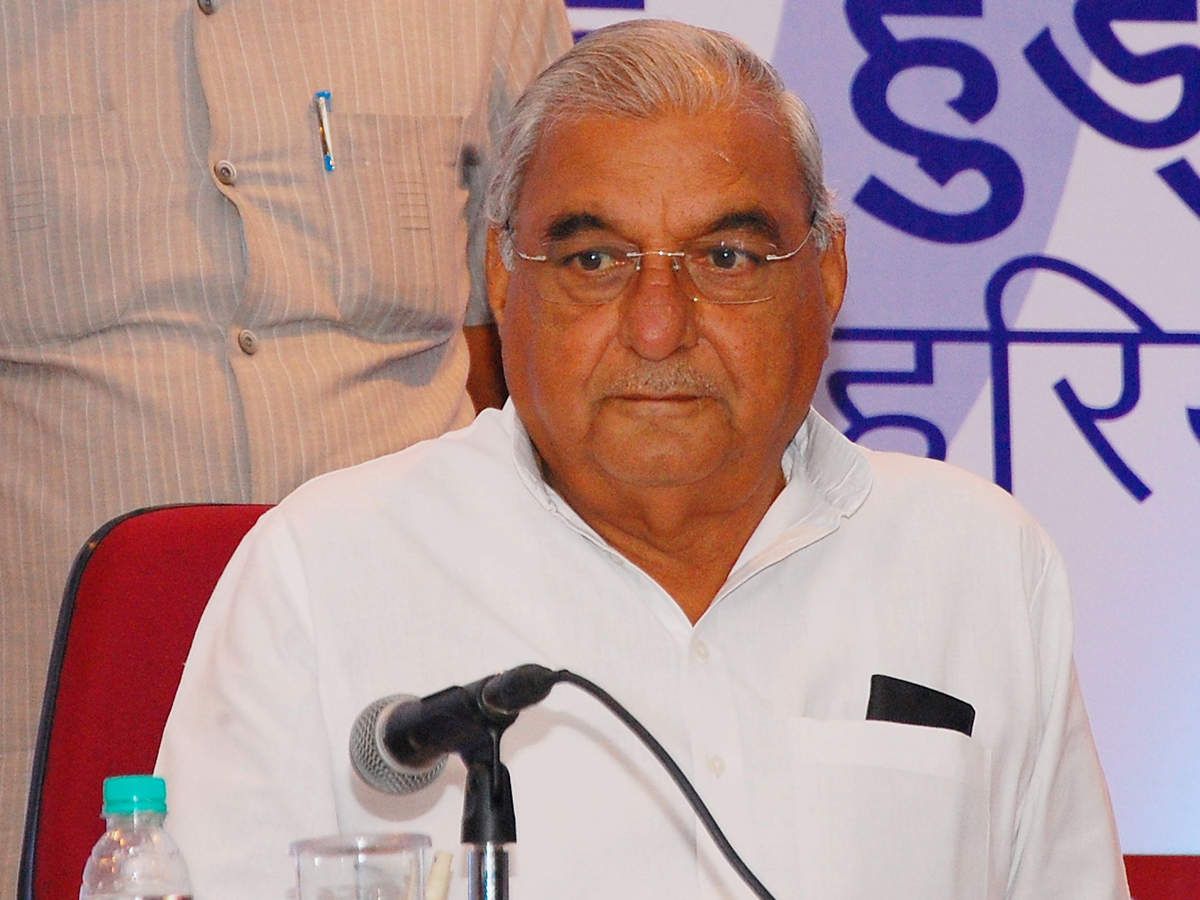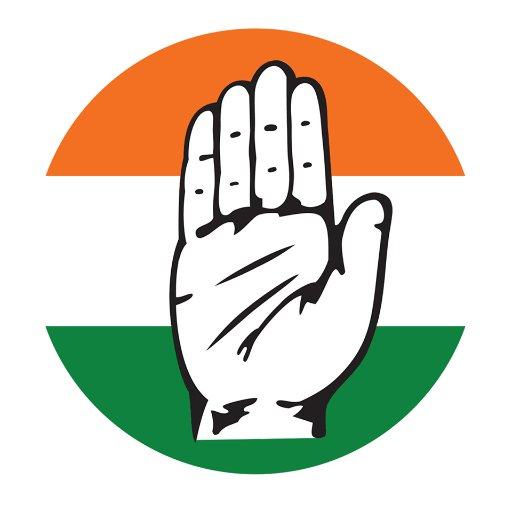Agricultural Policy should not be Production-Centric, it should be Farmer-Centric

- Bhupendra Singh Hooda
Agriculture in India plays a vital role in providing livelihood and ensuring food security. At the same time, agriculture is also important for reducing poverty and maintaining sustainable development. Serious problems like ‘Naxalism’ and ‘Migration’ can also be dealt with by developing agricultural sector. Agriculture contributes 16 percent to the GDP of a developing country like India and 49 percent to employment generation. Increasing productivity in the agricultural sector will also help in boosting other productive sectors of the economy.
Due to irregular monsoon, low yield and not getting the right price for agricultural produce, the farmers of India are forced to take loans and then they get trapped in debt-trap. From time-to-time, farmers’ loan waivers were announced in Congress-ruled states like Rajasthan, Chhattisgarh and Karnataka. However, agricultural experts believe that results will be betterif the basic problem of the farmers is taken care of, instead of giving them loan waivers.
The Indian agriculture sector is currently grappling with a number of problems. Seeing the progress of the cities, the farmers have started feeling that farming is a loss-inducing deal. Due to this, the problem of migration towards cities has also increased. According to a survey conducted in 2014, more than 40 percent of the country’s farmers were dissatisfied with their economic condition. This figure was over 60 percent in Northeast India, while over 70 percent of farmers believed that city life was better than rural life.
With the increase in population, the size of the farms is also getting smaller. Because of this, the use of machines in these fields is also difficult. The area of irrigated land in the country is also limited, as a result of which farmers are over-dependent on the monsoon. There is also no proper arrangement for storage and processing after production. The agriculture sector has been a victim of severe neglect during the 9 years of the Modi government. Subsidy given to the farmers has been drastically cut and there is a lot of irregularity in the distribution system of the subsidy.
There is a lack of investment as well as effective policies and adequate research in the agriculture sector. Due to poverty and indebtedness, they are forced to sell their produce to middlemen at low prices. Due to the lack of basic facilities like roads and electricity required for agriculture, the market of agricultural products is affected. Due to these problems, the quality of Indian agricultural products is not conforming to international standards, due to which the export of Indian agricultural products is getting affected.
The promise made by the Modi government to double the income of farmers by 2022 proved to be just an election gimmick. If we review the policies of this government, then its anti-farmer face stands exposed.
For the last few years, farmers have been agitating for a legal guarantee of the Minimum Support Price (MSP) of their crops and 50 percent more than the C2 cost price as recommended by the Swaminathan Commission. Legal guarantee of Minimum Support Price was the main demand in this historic movement that lasted for more than a year, along with the withdrawal of three black agricultural laws.
Before assessing the need for Minimum Support Price and the arguments in its favour and opposition, it is necessary to understand and accept some facts. First, the Minimum Support Price is the minimum price of agricultural produce which is necessary for the survival of agriculture and the farmer. This is not a profitable value, but it is at least a practical value. If the farmer does not get even this, then the farmer is bound to be in debt.
Second, about 50 percent of India’s population is dependent on agriculture and agriculture related activities. This includes farmers, landless farmers, agricultural laborers, artisans etc. Therefore, it is the largest employing business in the country. According to a report by the National Bank for Agriculture and Rural Development (NABARD) in the year 2019, every farmer family of the country is under a debt of more than one lakh rupees each. This is the plight of the farmer at a time when the farmers in the country are given subsidy of 3.36 lakh crores annually by the central and state governments in the form of cheap fertilizers, manures, electricity and water. This clearly means that farmers are not getting remunerative prices for their crops.
Third, only 6 percent of the farmers in the country are getting the benefit of minimum price for some crops. Fourth, natural calamities and marketing are destroying the farmers. Changes in the environment are increasing the difficulties of the agriculture sector. That’s why, the farmer cannot be left dependent on the ravages of the weather and the middlemen of the market. Fifth, the interest of the farmers does not lie in the productivity and price of the crops, but in the increase in their income; an income by which the basic needs and aspirations of his life can be fulfilled. That’s why, there is a need for new solutions and means to increase the income of farmers engaged in traditional business, like agriculture.
We have to accept the fact that the farmer is not just a machine to increase the productivity of crops. In human life, even he wants all the comforts and facilities of the modern world. It is also his fundamental right. That’s why, the agricultural policy of our country should not only be production-centric, it should also be farmer-centric. To protect the interests of the consumer, the responsibility of providing cheap food grains should not fall on the farmer alone. It is often seen that the farmer gets a very low price for his crop, but it is not necessary that the consumer gets that crop at a cheaper rate.As a recent example, the tomato producing farmer gets the price of tomato at about Rs. 4 to 5 per kg, while the consumer is getting the same tomato at Rs. 100-120 per kg these days. The major reason for this is the profiteering of the middlemen, which needs to be controlled.
Although the share of agriculture in the country’s Gross Domestic Product (GDP) has come down to 17-18 per cent, it does not diminish the importance of agriculture in any way. Even today, the entire economy of the country is dependent on agriculture, which has been confirmed by the 3.9 percent growth rate in the agriculture sector during the Corona period. That’s why, it is said that if the condition of agriculture is not good, then nothing can be equally good.
It is also a bitter truth that no other business has to face as many unforeseen risks like heat, flood, fire, frost, untimely rain, famine, diseases etc. right from sowing to harvesting. The farmer has to face the uncertainty and apprehension of his income. If the income of the farmer is permanent and fixed, then he can fulfil the priorities of his life.
The Minimum Support Price of a farmer’s crop assures the farmer about his income and saves him from bankruptcy. Therefore, as a right of the farmer, it is necessary to secure the value of crops by providing legal guarantee.
During the nine-year tenure of the Bharatiya Janata Party government, the total outstanding loan on farmers has increased to Rs. 23.44 lakh crores in 2021-22 from Rs. 9.64 lakh crores as on March 31, 2014. During this period, due to a slight increase in the Minimum Support Price and non-purchase of crops even at this price, the debt burden on the farmer is increasing. If the farmer has to sell his crops at prices less than the Minimum Support Price announced by the government, then the announcement of the Minimum Support Price is just a formality and stands meaningless. That’s why, its legal guarantee is necessary.
Based on these few facts, being the Chairman of the Committee on Agriculture in the 85th session of the Indian National Congress held at Raipur (Chhattisgarh), I presented a resolution on this subject which was unanimously passed by the Congress Party. In some parts of this proposal, MSP should be made a legal right of the farmers. Buying agricultural produce at a price below MSP should be a punishable offence. The MSP should be calculated by adding 50 per cent profit on C2 cost, as recommended by the Swaminathan Commission and then by the Group of Chief Ministers headed by me in 2010. Vegetable crops like ginger, garlic, turmeric, chilli etc. should also be brought under the purview of MSP.
The policy makers of the country consider farming mainly in two phases the first phase is from sowing to harvesting and the second phase is its sale in the market. In both the stages, the farmer is helpless as he has no control over the situation - Natural calamities in the first phase and market forces in the second phase. For example, the farmer has to face less weight, less value, no lifting, no payment, no buyer and no one responsible. To rescue the farmer from this situation, along with other measures, it is necessary to expand the concept of agribusiness, that is, its third phase should be considered as ‘farm to fork’ (i.e. from farm to their plates) and the share of the farmer should be fixed in it.
Equally important is the process of its calculation, along with the legal guarantee of the Minimum Support Price. At present, the government calculates this by adding 50 percent profit to the cost incurred by the farmer and the estimated value of the labour of his family, which is insufficient. The farmers are demanding the cost (as per the C2 formula) suggested by the Swaminathan Commission.
Due to not getting the right price, the debt burden on the farmers is continuously increasing. Loan waiver by governments may provide temporary relief, but it is not a permanent solution to farmers’ hardships and poverty. Constant increase in agricultural cost, not getting fair price of crops, natural calamities and problems in the mandis are a major reason for increasing debt on farmers, but the increasing expenditure on good education of their children and health services of the family is also another big reason for farmers to be in debt.
In order to bring the farmer from debt waiver to a permanent state of complete debt relief, it is necessary that the average expenditure incurred by the farmer on the education and health services of his children should be included in the calculation of the determination of the Minimum Support Price based on the C2 formula. Because this is a better option than repeated loan waivers to ensure proper increase in the income of the farmer. The prosperity of the country lies in the prosperity of its farmers.
(The writer is former Chief Minister of Haryana and Leader of the Opposition (Haryana))







